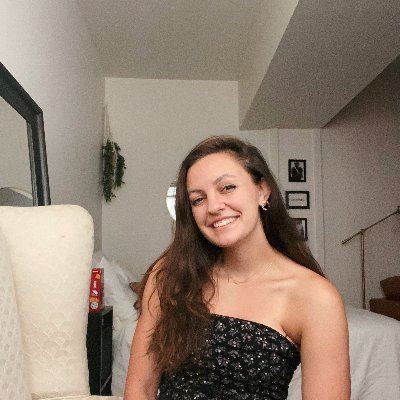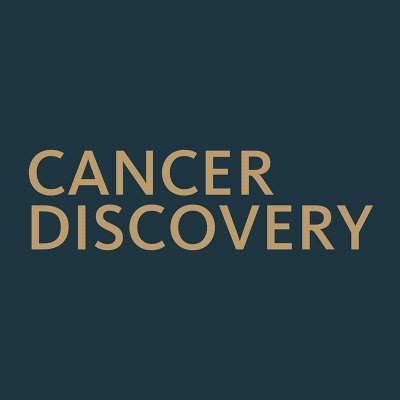
Madison Darmofal
@mmdarmofal
Followers
212
Following
193
Media
5
Statuses
40
computational cancer biologist @MSKCancerCenter PhD w/ @MFBerger1 & @quaidmorris, @cbmstudent alumni | @MIT alumni she/her/hers
Joined May 2013
✨New paper alert @CD_AACR✨ - GDD-ENS distinguishes 38 cancer types (>96% of patients) w/ high accuracy using routinely collected DNA sequencing data #MSKIMPACT and generalizes well to other gene panels w/o retraining - CNAs (arm/gene level) are key features for classification
Now online in @CD_AACR: #DeepLearning Model for Tumor Type Prediction using Targeted Clinical Genomic Sequencing Data @mmdarmofal @MFBerger1 @quaidmorris
https://t.co/dVGKB0bIfp
@MSKCancerCenter
1
15
30
🧬cfDNA in biliart tract cancers @JCOPO_ASCO 📌OncoKB level 1/2 alterations in 25% of patients 📌High tissue concordance 📌May be prognostic ✅Another data reinforcing utility of ctDNA in BTCs 👉 https://t.co/a0DvUW4UQx
@ASCO @curecc @PrecisionBTCnet #cancer #oncology #MedX
1
21
44
Happy to announce that PERT is now published in @NatureComms ! With PERT, we explore replication timing variability (Fig 3-4), chrXi reactivation (Fig 5), and how S-phase fractions struggle to approximate clone fitness (Fig 6). https://t.co/V0WqwX5G6e 1/n
nature.com
Nature Communications - Here the authors develop a probabilistic model for single-cell DNA sequencing of aneuploid tumors that infers clone-specific replication timing and S-phase fractions,...
2
16
44
Meet #MSKPostdoc Cassandra Burdziak (@CassBurdziak) from the @dana_peer Lab, who uses single-cell technologies and algorithms to investigate how cancer cells, regardless of where they come from, can change to mimic the biology of vastly different tissues. #NPAW2024
0
5
34
Metient reconstructs the migration histories of metastatic cancers by scoring a Pareto front of parsimonious histories. It can be auto-calibrated to different cohorts. Superstar PhD student @divyakoyy will present at #ISMB2024 in MLCSB Check it out: https://t.co/jMwyEEm7Cz
biorxiv.org
The metastatic spread of a cancer can be reconstructed from DNA sequencing of primary and metastatic tumours, but doing so requires solving a challenging combinatorial optimization problem. This...
2
17
55
New from the June issue— #DeepLearning Model for Tumor Type Prediction using Targeted Clinical Genomic Sequencing Data, by @mmdarmofal, @MFBerger1, @quaidmorris et al. https://t.co/KPMQ5EW160
@MSKCancerCenter
0
15
39
Super excited to announce that our work “Wasserstein Wormhole: Scalable Optimal Transport with Transformer” has been accepted to #ICML2024! Wormhole is method to find OT-preserving embeddings for massive cohorts of points clouds. https://t.co/wWRwFH3NUT
arxiv.org
Optimal transport (OT) and the related Wasserstein metric (W) are powerful and ubiquitous tools for comparing distributions. However, computing pairwise Wasserstein distances rapidly becomes...
1
15
78
Graduate education is critical for the future. @Cornell @CornellGrad @cornell_tech @WeillCornellGS @WeillCornell grad students told their stories on Capitol Hill to demonstrate the value of research. Thank you @RepMolinaroNY19 for your support.
2
3
25
Woohoo ENVI/COVET is out in @NatureBiotech!! Couldn’t have done it without my brilliant mentor @dana_peer and the rest of the Peer lab!
1) Super excited that COVET and ENVI by the gifted @DoronTheViking finally out in @NatureBiotech providing a powerful tool to analyze the rapidly accumulating spatial transcriptomics data. See https://t.co/U6C7zQ0OTS for the original BioRxiv tweetorial -->
5
2
36
A statue has been unveiled on Mile 2 of the Boston Marathon in honor of Spencer, the official dog of the Boston Marathon, who cheered on thousands of runners for years, rain or shine. Spencer passed away last year after a battle with cancer at 13 years old. 💛💙
20
200
2K
#OnlineFirst: Deep Learning Model for Tumor Type Prediction using Targeted Clinical Genomic Sequencing Data, by @mmdarmofal, @MFBerger1, @quaidmorris et al. https://t.co/NmDtVFtFbt
@MSKCancerCenter
0
7
13
Thanks to an incredible team for making this work possible! @MFBerger1 @quaidmorris @JieFuChen2 @evakiani @AnnaVarghese4 @nikolausschultz @cbmstudent + x-less Shalabh, Gurnit, Michael, Jason, Anoop, Aijaz, & the GDD-RF authors ( https://t.co/LzayUoRlBL)
We would also like to especially acknowledge Alex Penson, Niedzica Camacho, @zheng_youyun and @BarryTaylorLab whose initial GDD-RF model was the foundation for this work, without which our updated model would not be possible. https://t.co/FejkUvBwtY
0
0
1
Here’s a link to the summary of the pre-print ( https://t.co/RFvE6c2Skj) but please check out our manuscript, because there have been a lot of improvements due to an extremely useful and smooth review process. Thanks @ElizSMcKenna and our reviewers!
Treatment options are limited for the 3-5% of patients who have cancers of unknown primary. So, we are excited to present 💥GDD-ENS💥: a highly accurate, comprehensive tumor type classifier based on data from a routinely applied FDA-authorized test 🧵 https://t.co/uYOyZ1LuqD
1
0
2
So excited to announce that my most recent work has been published. If you’re interested in genetically encoding circular mRNA, or packaging circular mRNA into virus-like particles for cell-type specific delivery, this paper is for you!
Online now! Highly efficient cellular expression of circular mRNA enables prolonged protein expression by Mildred J. Unti @MildredUnti, and Samie R. Jaffrey @JaffreyLab at @WeillCornell #resource
https://t.co/a2fuiCqQDM
#chembiol
0
11
49
“Ten years ago I was kicked out and forced to retire.” Our new medicine laureate Katalin Karikó (@kkariko) told us how much it means to be awarded the Nobel Prize after a scientific career that has been full of challenges. Ten years ago, Karikó was still doing all her
358
7K
24K
We would also like to especially acknowledge Alex Penson, Niedzica Camacho, @zheng_youyun and @BarryTaylorLab whose initial GDD-RF model was the foundation for this work, without which our updated model would not be possible. https://t.co/FejkUvBwtY
jamanetwork.com
This cohort study develops a machine learning algorithm, using tumors from patients with advanced cancer, to aid in the prediction and classification of tumor types.
0
0
2
Thank you to @quaidmorris, @MFBerger1, Shalabh Suman, Gurnit Atwal, Jason Chang, @JieFuChen2 , Mike Toomey, @evakiani, @AnnaVarghese4, Anoop Balakrishnan Rema, Aijazuddin Syed and @nikolausschultz for making this possible! @cbm_student @MSKCancerCenter #MSKIMPACT
1
0
2
GDD-ENS has already been implemented prospectively, concurrent with MSK-IMPACT clinical testing. It provides prediction confidence and prediction-specific feature importance values to clinicians on an internal database 🧬🖥️
1
0
1
Even GDD-ENS misclassifications are informative. Most reflect well-known tumor biology, but we also found that non-uveal melanomas misclassified as uveal are from the rare CNS melanoma class that GDD-ENS Shapley values reveal as having uveal-like pathway alterations.
1
0
1
GDD-ENS supports nearly a 4x increase in # of patients with cancers of unknown primary (CUP) that can be connected to a FDA-approved targeted therapy, up to 48% of patients with actionable alterations.
1
0
2

















